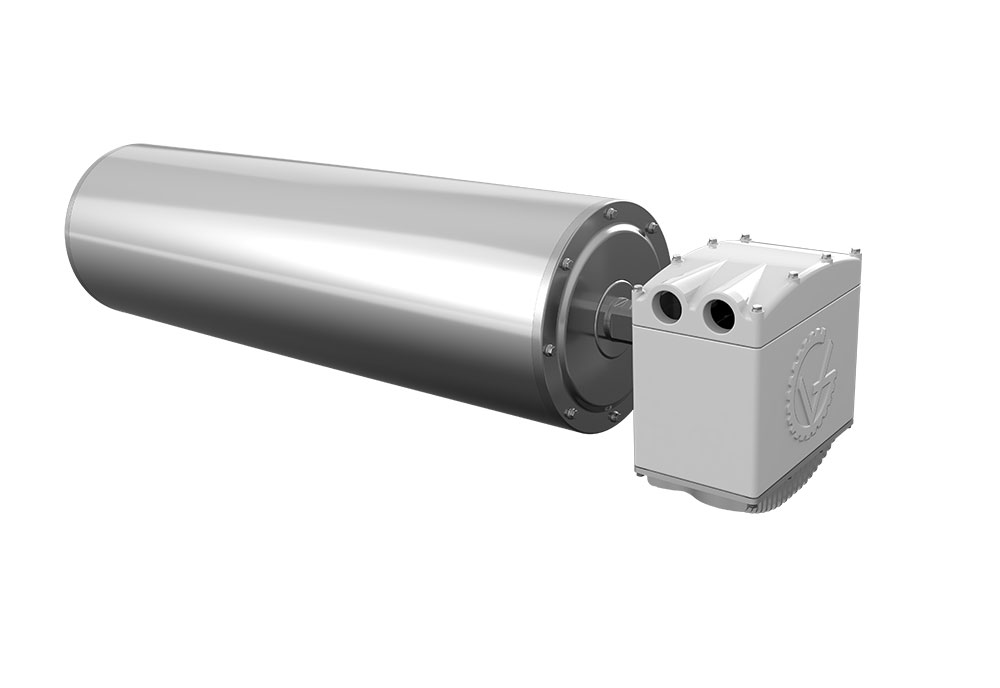
Motors and Related Equipment Become More Versatile
Equipment is powered by motors. And increasingly, so is equipment innovation.
Improvements in electric motors, and in the drives and controls that regulate them, are enhancing the versatility and flexibility of conveyors and other food plant equipment. As they become more powerful and more capable of handling varied loads and tasks, they open new possibilities of economy, quick response and better overall performance.
One of the most significant trends has to do with conveyors. For a long time, running them at a single speed was the only option. Even when there was nothing for them to carry, they often were kept running because that was more energy-efficient than repeatedly stopping and starting them. If varied speeds were absolutely required, to accommodate changes in products or packages, that had to be achieved through mechanical means, like shifting pulleys to stretch a power transmission belt.
In many food and beverage plants, that’s still the case. But increasingly workhorse motors, the kind capable of powering conveyors, are capable of handling different speeds, even starting and stopping. This is because of improvements in the drives that feed them.
AC-DC
Most motors that power food plants run on alternating current (AC), because they’re cheaper, safer and more durable than direct-current (DC) motors. But AC motors basically are designed to run at only one speed. To vary their speed, the electric current that powers them has to pass through a drive that alters its frequency – the number of times per second that it pulses, or “alternates.”
These variable-frequency drives (VFDs) are relatively complex, comprising a capacitor that stores the alternating current and an array of circuits that changes the frequency. (Technically, a VFD converts incoming alternating current into direct current, which it “fools” the motor into thinking is AC by outputting it at the required number of cycles per second.)
This complexity made early models fragile and hot to operate, requiring cooling fans and adequate ventilation. These factors made VFDs problematic for food plants, especially in tough environments with high temperatures, vibration, moisture or dust.
To accommodate these conditions, VFDs sometimes are enclosed in protective cabinets, often at a considerable distance from the motors they power. But this presents another problem: connecting the drive to the motor. The power has to pass through a cable, and when it’s a long way between the drive and the motor, cabling becomes complicated and expensive. This is especially true for motors in high-load applications, because cables that can carry the necessary amperage are thicker and costlier.
However, this situation is improving because VFDs are improving. They’re becoming smaller, lighter and more durable, enabling them to be installed much closer to the motors they power and control.
“I’ve seen through the years, [VFDs have] gotten smaller and able to handle more parameters and acting better,” says Allen Overmyer, senior technical advisor with Rovema NA, a manufacturer of baggers and other packaging equipment. “It’s just like any technology.”
In some cases, VFDs can be put literally in the same package as the motors they power and control. That’s what VDG (Van der Graaf) is doing with its new intelligent drum motor. Designed, like all drum motors, to pull a conveyor, it integrates an AC motor, a VFD and a controller into one unit.
“It saves on the install, and it saves on the cost of wiring it,” says Rick Zander, VDG's business development manager.
[...]
VDG’s intelligent drum motor uses permanent magnets. Zander says that, to get the torque it needs, an induction motor will draw up to twice its usual operational amperage at startup. A permanent magnet motor is instantly at speed upon turning on and stays at constant torque, he says: “You can speed it up and slow it down – the torque will be just the same.”
Permanent magnets can be mounted on the outside or the inside of the rotor. The latter are known as internal permanent magnet (IPM) motors. Positioning the magnets in the rotor’s interior makes the motor even more efficient.
View original article